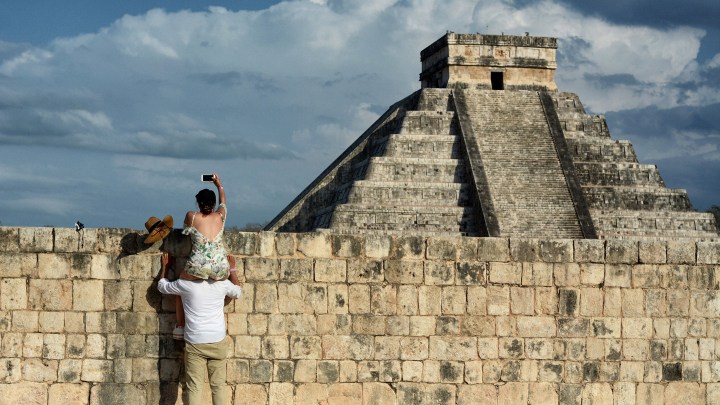
In an ancient Mesoamerican city, archaeologists find a narrow wealth gap
In an ancient Mesoamerican city, archaeologists find a narrow wealth gap

Adrian Aleman Martinez crouches at the bottom of an archaeological excavation and gingerly scrapes the ground next to a mural that had been buried for hundreds of years.
“You have to be really patient,” Martinez said, scooping dirt with a trowel and dumping it into a bucket. “If we do it with a shovel, we’ll knock everything off and we won’t find anything.”
Martinez and a team of workers specialize in the delicate work of unearthing buildings and artifacts from the ancient city of Teotihuacán, about two hours north of present-day Mexico City. This summer, they’re working with a team of Boston University archaeologists to excavate this mural and other structures in order to help decipher how working class people lived on the periphery of this ancient city.

The civilization of Teotihuacán predated the better-known Aztecs, existing from about 100 B.C. until about 600 A.C., and peaking with a population of roughly 100,000 people. Martinez and the Boston University team have uncovered former homes and workshops of crafts people who worked with pottery or obsidian volcanic glass.
“You have this mix of very nice walls and preserved floors and then not-so-nice adobe walls,” said Daniela Hernandez Sariñana, a Mexico City native and doctoral student at Boston University. “They had luxury items, mural paintings.”

At the center of Teotihuacán are two pyramids thousands of tourists visit every year — the sun and the moon pyramids — representing political and religious power. Recent findings on the periphery have helped substantiate conclusions that the wealth disparity between commoners and elites in Teotihuacán was among the lowest compared to other ancient civilizations, as well as significantly lower than many societies today, archaeologists say.
Common Teotihuacán folk had access to a high standard of living, engaging in a sophisticated trade that was unusual for Mesoamerican societies, according to David Carballo, head of the Boston University archaeology program. They imported jade and mica stones from present-day Guatemala and Oaxaca as well as shells from the Gulf and Pacific coasts.
“That’s probably why people were migrating to Teotihuacán over its centuries of occupation,” Carballo said. “This was an economic hub that drew people. It was a religious pilgrimage center and political capital.”

Archaeologists say elites and commoners alike lived in large apartments with murals, and used utensils, like sharpened obsidian glass, that were made using technology that was advanced for the time.
There was a greater disparity between the rich and the poor in the Aztec and Roman empires, said Arizona State University archaeologist Michael E. Smith. Pompeii and other known Roman cities showed a greater disparity, with the elites controlling more of the wealth, he said.
Present societies can learn from Teotihuacán’s narrow wealth gap, said Smith.
“It gives the message that such a thing is possible,” he said. “You can have a complex urban society without a high level of inequality. That’s the conclusion we get from Teotihuacán.”
There’s a lot happening in the world. Through it all, Marketplace is here for you.
You rely on Marketplace to break down the world’s events and tell you how it affects you in a fact-based, approachable way. We rely on your financial support to keep making that possible.
Your donation today powers the independent journalism that you rely on. For just $5/month, you can help sustain Marketplace so we can keep reporting on the things that matter to you.












